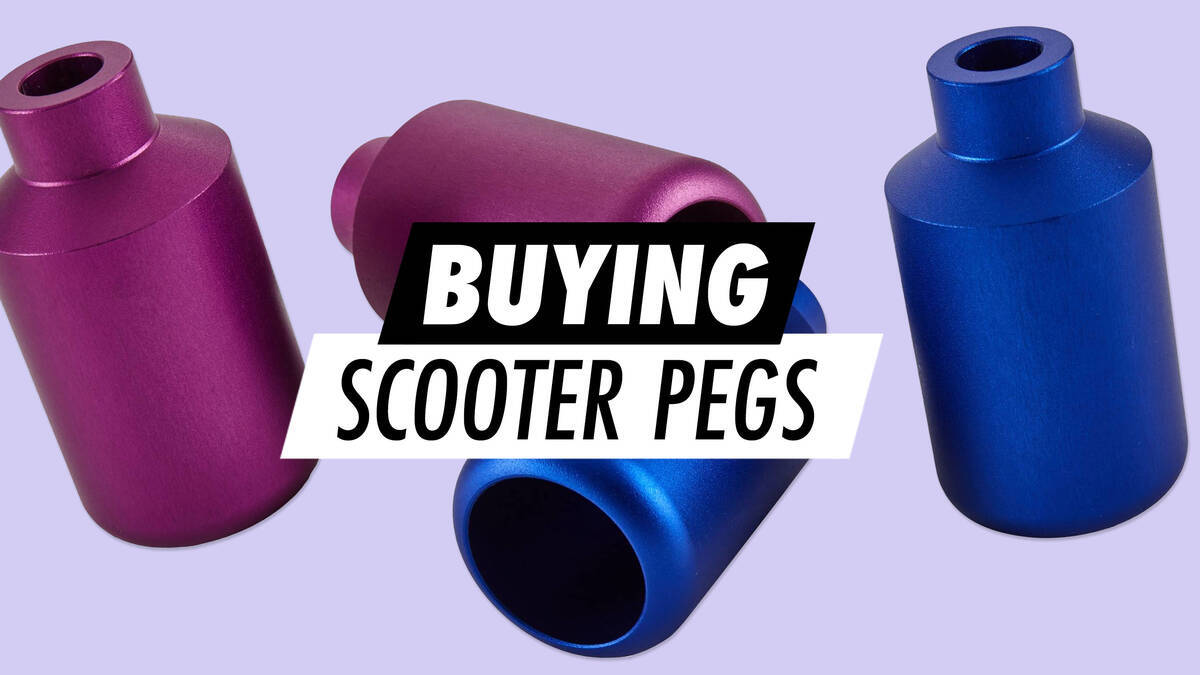Buying Scooter Pegs

Be aware that not every peg is compatible with all scooters, as designs and brands vary.
An excellent suggestion is to select pegs along with the deck & fork from the same brand. If uncertain or without written information about the peg you're purchasing, feel free to contact the skate shop.
A useful guideline is:
The axle to which the peg is attached should extend longer than the deck's width. Use spacers to create distance if the deck obstructs the peg.

Material of Pegs
- Steel (chrome steel) offers strength and is suitable for street riding.
- Aluminium is lighter and better for park riding, though it lacks the robustness of steel.
Different Pegs
There are "one piece pegs" available where the axle and the peg are integrated.
These tend to be more durable than standard pegs.
Durability and Use
Pegs can be replaced, and if you're keen on grinding kerbs (stone or concrete, etc.), it's necessary to wax & stone the kerb thoroughly to smooth it. Additionally, replace your pegs before they become so deformed that removal becomes difficult or impossible.
Installation
Decide whether to position your pegs on the left or right side.
As different scooter brands employ various axle bolts, we recommend utilising the axle/bolt from your own scooter when fitting new pegs, unless specified otherwise by your pegs. In many cases, you only need to unscrew the bolt head on your scooter to attach pegs, then reseat the bolt head through the peg and ensure it is tightened securely.
Return to Assembling a Custom Trick Scooter
Return to Pro Scooters Explained
